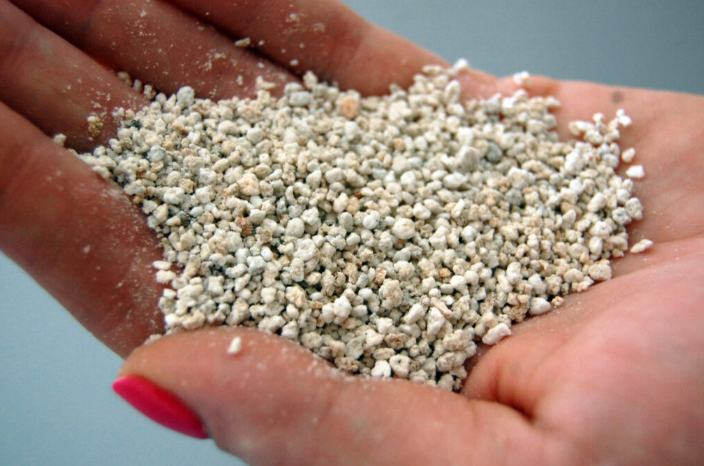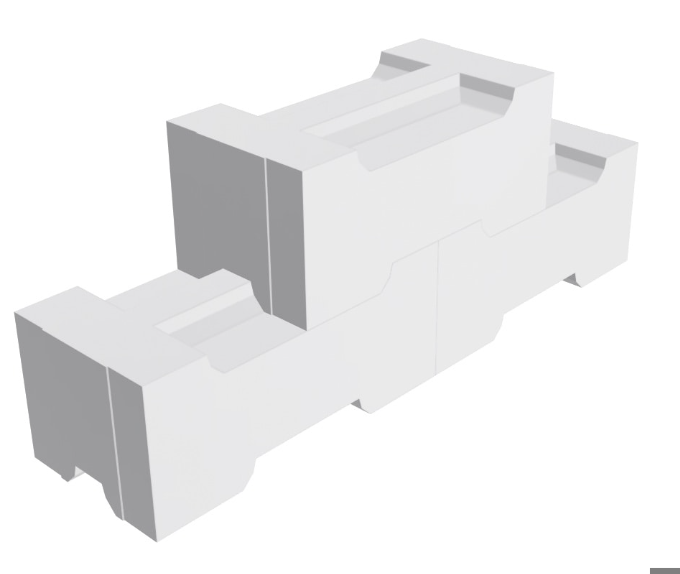Sustainable Building Materials Easy to Use - Perlite Blocks 3E System


In a series of upcoming posts, I would like to explore alternatives to traditional building materials. I aim to move away from a conventional layered wall made of structural blocks and insulation, and instead focus on a single-leaf, highly insulated wall. I will analyze the most ecological and efficient technologies that enable us to build faster and healthier. Each technology will have its advantages, but it will also present several drawbacks.
So, let’s get to the point. The first material I want to discuss is a building constructed from expanded perlite blocks. Suppliers advertise this product as sustainable, self-insulating, jointless, and easy to build with. (1)
Characteristics of Expanded Perlite
Perlite is a naturally occurring volcanic rock characterized by a significant amount of water that becomes trapped during its formation. Upon exposure to temperatures reaching 1000°C, the perlite grains expand their volume by approximately 20 times, resulting in a lightweight, chemically stable, and biologically sterile material.
Expanded perlite, which was invented in 1938 by L. Lee Boyer, is a patented product that can be transformed into an insulating or refractory material. (2) The characteristics of expanded perlite include:
- chemical neutrality
- light weight
- incombustibility
- thermal insulation properties
- acoustic insulation capabilities.
This versatile material is extensively utilized in agriculture, gardening, and construction. Within the construction sector, expanded perlite is predominantly employed in the production of lightweight and fill insulation materials, insulating plaster, and perlite concrete blocks. In creating perlite plaster, sand is frequently substituted with perlite, which enhances thermal properties while reducing weight, although this substitution may lead to some compromise in structural strength.
Perlite Click-Bond Block System 3E
The Perlite Click-Bond Block System 3E (3) is an innovative construction solution consisting of blocks composed of 90% perlite. This system facilitates the construction of highly insulated walls in a single layer, presenting a prospective application for one-layer external wall construction, including low energy designs.
The innovative design of the blocks allows for the construction of walls without the need for mortar or adhesive. The dimensions of the blocks are 704 mm x 352 mm x 300 mm (length x width x height). In contrast, a two-layer wall for a passive house situated in a temperate climate would require a total wall thickness of approximately 550 mm, comprising 240 mm for the block and an additional 300 mm for insulation.
The U-value for a single-layer wall constructed from expanded perlite blocks (352 mm) is measured at 0.198 W/(m²K). This heat transmittance value is relatively high for a single-leaf wall yet doesn’t meet the standard requirement for passive house.
In accordance with Passive House standards, the external wall must meet a U-value within the range of 0.100 to 0.150 W/(m²K). (4)
The mentioned qualities present a highly promising outlook. Particularly, the elimination of commonly used insulation materials, such as EPS, represents a significant advancement toward the ideals held by environmentally conscious individuals. Furthermore, utilizing a one-layer wall system mitigates the potential for errors during the construction process. It is important to note that the majority of instances of thermal bridging or degradation of insulation can be attributed to mistakes made during construction rather than deficiencies in the technology itself.
Is it still feasible to construct a building from expanded perlite blocks that complies with Passive House standards?
One viable approach involves the application of a layer of external insulation, such as mineral wool or wooden wool, that allows for vapor transfer through the materials. Alternatively, a highly thermally insulating and vapor-permeable finishing plaster with thermal conductivity values of λ = 0.027 W/mK may be utilized. (5). In comparison, the thermal conductivity of expanded polystyrene (EPS) ranges from λ = 0.038 to 0.042 W/mK.
Key Aspects to Remember
When considering the use of perlite blocks in construction, it is important to keep several key factors in mind. One primary challenge is the associated costs and the limited availability of specialists experienced in perlite-based construction. However, mastering the construction process requires only about 60 minutes of training. Time is a critical resource, and using perlite blocks can significantly enhance construction efficiency.
Additionally, the window and door lintels, as well as the structural framework, must be made of reinforced concrete and properly insulated to meet the overall U-value requirements of the wall assembly.
Waterproofing is also essential for ensuring the long-term performance and durability of perlite walls. While the material in the 3E system exhibits hydrophobic properties, comprehensive waterproofing should still be applied to the foundation slab and the first layer of blocks, as these are most susceptible to challenging weather conditions. (6)
Bottomline
Constructing a passive building with expanded perlite blocks does present some challenges and additional costs. However, depending on local climatic conditions, it is possible to create a highly energy-efficient and health-promoting structure in a straightforward and efficient manner.
In conclusion, using expanded perlite blocks within the framework proposed by the 3E system represents a significant advancement toward more ecological, health-conscious, and cost-effective building practices.
(1) (3) (6) https://www.system3e.com/
(2) https://perlindustria.com/
author: Joanna Maria Daoud
We can help you make your dream of a healthy home a reality.
